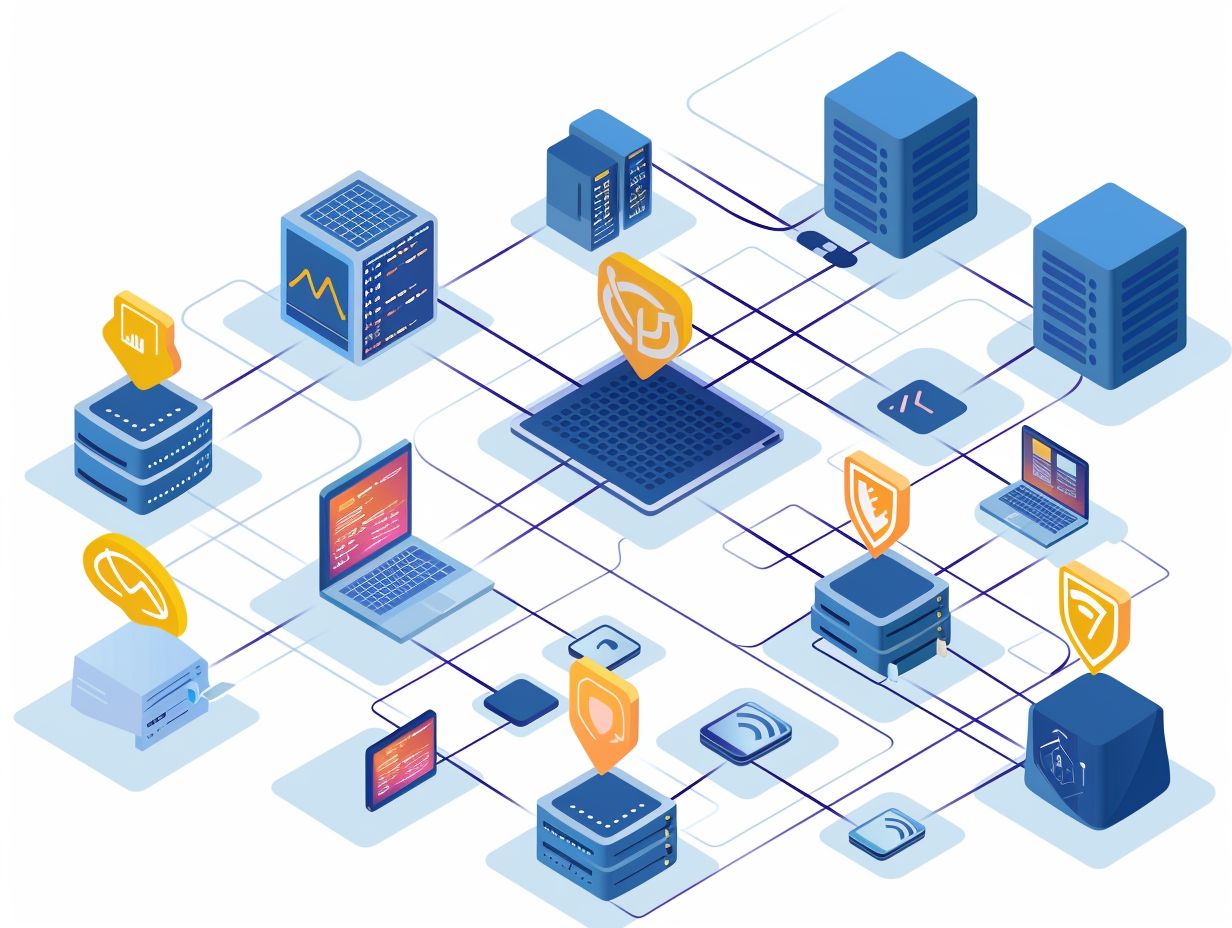The Impact Of Sase On Traditional Vpn Strategies

In the ever-evolving landscape of network security, you are witnessing a notable shift from traditional Virtual Private Networks (VPNs) to Secure Access Service Edge (SASE).
This analysis will explore the defining characteristics of both SASE and traditional VPNs, highlight the limitations of the latter, and outline the benefits and advantages of embracing SASE.
Additionally, we will examine how SASE is influencing the future of VPN strategies, its implications for network security, and the key factors that organizations must consider when contemplating the adoption of SASE.
You are invited to delve into the transformative impact of SASE on traditional VPN strategies.
Key Takeaways:

Defining SASE and Traditional VPNs
Understanding the contrasting approaches to securing network access for organizations involves defining SASE (Secure Access Service Edge) and Traditional VPNs. SASE represents a modern approach to network security, integrating security capabilities directly into the cloud-based network architecture for a comprehensive and holistic approach to protecting data and network resources. Conversely, Traditional VPNs rely on tunneling protocols to establish secure connections between remote users and the organization’s network.
SASE emphasizes user-centric security by dynamically applying access policies based on the user’s identity and context, enhancing overall protection. Its implementation in organizations can streamline network security, reduce complexity, and ensure secure access for users, regardless of their location. This modern approach to network security contrasts with the more traditional methods of VPNs, highlighting the evolving landscape of secure network access for organizations.
The Evolution of VPN Strategies
The evolution of VPN strategies has undergone a notable transformation due to the rising demands for secure remote work access. Initially, VPNs relied on traditional architectures; however, with technological advancements, contemporary VPN solutions have emerged to address the evolving requirements of organizations.
Changes in Network Security Needs
Changes in Network Security Needs have become more pronounced with the rise of SASE and the evolving threat landscape. As organizations expand their digital footprint, technology advancements are reshaping how users and cybersecurity teams approach network security.
The adoption of Secure Access Service Edge (SASE) architecture has brought a paradigm shift in network security strategies. With the centralized control and security capabilities it offers, organizations are better equipped to address the dynamic nature of cybersecurity threats. The increasing reliance on cloud-based services and remote work arrangements has highlighted the importance of integrating security measures seamlessly into the network infrastructure. This has compelled users to rethink traditional perimeter-based security models and embrace a more holistic approach to safeguarding sensitive data.
Limitations of Traditional VPNs
The limitations of traditional VPNs have become increasingly apparent in the face of escalating cybersecurity threats. While traditional VPNs do provide a certain level of protection, their shortcomings in addressing modern cyber threats have exposed vulnerabilities within organizational networks.
In the ever-changing landscape of cyber threats, traditional VPNs struggle to keep up with the sophisticated techniques employed by hackers. One common challenge is the lack of comprehensive threat intelligence integration, leaving networks vulnerable to advanced persistent threats and zero-day attacks. Furthermore, traditional VPNs often fall short in providing granular access controls, which makes enforcing strict security policies more difficult. This limitation creates opportunities for unauthorized access and poses significant risks to sensitive data.
As cyber threats continue to evolve, organizations should consider exploring newer technologies that offer more robust protection against emerging dangers.
The Emergence of SASE

The emergence of SASE (Secure Access Service Edge) signifies a paradigm shift in network security for those seeking advanced solutions. Leveraging cloud-based technologies, SASE provides secure access at the network edge, integrating zero-trust principles, and emphasizing application-centric security. This comprehensive approach to network security offers a modern solution for safeguarding networks effectively.
What is SASE?
SASE (Secure Access Service Edge) is a comprehensive network security solution that integrates network access control, security services, and cybersecurity tools into a unified cloud-based architecture. This technology aims to streamline security operations and enhance user experience across various services.
By combining access control and security functions, SASE ensures that user entities go through authentication and authorization processes before accessing network resources, thereby reducing the risk of unauthorized entry. Its cloud-based approach allows for scalable deployment and management of security services, providing a unified cybersecurity framework.
The advantages of SASE include improved threat detection, decreased latency, and enhanced network performance. In today’s cybersecurity landscape, where the increasing use of connected devices and remote workforces present challenges, SASE plays a crucial role in securing data transmissions and defending against cyber threats.
Benefits and Advantages
The benefits and advantages of adopting SASE include enhanced cybersecurity measures, improved infrastructure visibility, and scalable security deployments. By integrating these capabilities, organizations can strengthen their networks against evolving threats while maintaining operational efficiency.
This integrated approach not only strengthens cybersecurity defenses but also provides a comprehensive view of network activity, allowing for improved threat detection and response. The scalability of SASE allows organizations to adapt to changing needs and expanding operations seamlessly, ensuring that security measures can grow alongside the business.
The granular visibility offered by SASE enables more precise control over network traffic, enhancing policy enforcement and reducing security blind spots. Ultimately, the implementation of SASE revolutionizes network security posture by consolidating and optimizing security measures in a flexible, centralized framework.
How SASE is Shaping the Future of VPN Strategies
The evolution of SASE is shaping the future of VPN strategies by revolutionizing network security paradigms. With a focus on automation, privacy, and operational efficiency, SASE is redefining how organizations approach secure remote access and data protection.
Impact on Network Security
The impact of SASE on network security is significant for you, as it enhances threat protection mechanisms and streamlines security operations to improve efficiency. By consolidating security functions and utilizing cloud capabilities, SASE provides a robust defense against evolving cyber threats.
This integrated approach not only strengthens protection against sophisticated cyber threats but also enhances operational efficiency by simplifying the management of multiple security solutions. SASE allows organizations like yours to efficiently adapt to the dynamic threat landscape, ensuring a proactive defense stance.
The flexibility and scalability offered by SASE give the power to businesses to address modern cybersecurity challenges with agility and effectiveness. The seamless integration of networking and security components within a unified framework significantly enhances the overall security posture, showcasing the adaptability and resilience of this transformative security architecture.
Changes in Implementation and Management

The changes in implementation and management resulting from SASE adoption include enhanced agility, robust encryption protocols, and improved internet traffic management. Organizations are transitioning to SASE to streamline network operations and enhance data protection.
By incorporating SASE, you can dynamically adjust your network architecture based on real-time needs, promoting a more agile response to changing demands. The integration of advanced encryption standards ensures that your data remains secure, even during transit over public networks. Optimizing internet traffic within the SASE framework enables organizations to efficiently route data, enhancing network efficiency and reducing latency. The holistic approach of SASE not only addresses security concerns but also enhances overall network performance and adaptability.
Considerations for Adopting SASE
When considering the adoption of SASE, your organization must evaluate policy alignment, endpoint security, and user-friendly configurations. These considerations play a crucial role in ensuring a successful transition to SASE-enabled network architectures.
Key Factors to Consider
When implementing SASE, you should consider key factors such as scalability requirements, integration of zero-trust policies, and compatibility with SD-WAN. These factors are essential for ensuring a successful transition to SASE-enabled network infrastructures.
Scalability is a crucial factor to evaluate as organizations need to determine if the SASE solution can support future growth and increased network demands. Zero-trust policies are vital in enhancing security by verifying each user and device that accesses the network.
The integration of SD-WAN technology is important for efficient traffic routing and optimization, leading to improved performance. It is essential to thoroughly evaluate these factors before implementing SASE to strengthen network security, streamline operations, and provide a seamless user experience.
Potential Challenges and Solutions
Navigating the potential challenges and solutions associated with SASE deployment requires a global perspective, endpoint-centric strategies, and business-aligned security policies. Addressing these challenges effectively is essential for maximizing the benefits of SASE across diverse organizational environments.
One common obstacle you may encounter in SASE implementation is the need to harmonize security protocols across various geographic locations and compliance requirements. Establishing a centralized framework that considers regional nuances and regulatory landscapes can streamline this process.
Ensuring robust endpoint security measures, such as encryption and access controls, is crucial in safeguarding sensitive data transmitted through diverse endpoints. Emphasizing business outcomes and aligning security priorities with organizational goals can help you prioritize resources effectively and demonstrate the value of SASE integration for overall business resilience.
Frequently Asked Questions
What is SASE and how does it impact traditional VPN strategies?

SASE stands for Secure Access Service Edge, which is a cloud-based network architecture that combines network security and WAN (Wide Area Network) functionality. This new approach to networking is changing the way organizations approach traditional VPN strategies by providing a more secure and efficient option.
What are the main benefits of using SASE compared to traditional VPNs?
SASE offers several benefits over traditional VPN strategies, including increased security, improved performance, and simplified management. With SASE, all network traffic is routed through the cloud, making it easier to manage and secure. It also eliminates the need for on-premises hardware, reducing costs and improving performance.
How does SASE improve security compared to traditional VPNs?
SASE improves security by providing a more comprehensive and integrated approach to network security. By combining network security and WAN functionality, SASE can identify and address security threats in real-time, reducing the risk of cyber attacks. It also offers granular control over network access, ensuring that only authorized users can access sensitive data.
Can SASE replace traditional VPN strategies completely?
While SASE offers a more advanced and efficient alternative to traditional VPNs, it may not completely replace them in all cases. Some organizations may still require a traditional VPN for certain tasks or to maintain compliance with specific regulations. However, SASE can still be used in conjunction with traditional VPNs to enhance security and optimize performance.
Is SASE suitable for all types of businesses and organizations?
Yes, SASE is suitable for all types of businesses and organizations, regardless of size or industry. This is because SASE is a flexible and scalable solution that can be customized to meet the specific needs and requirements of each organization. Whether you are a small business or a large corporation, SASE can provide a secure and efficient network infrastructure.
What are the key considerations when implementing SASE for an organization’s network?
When implementing SASE, organizations should consider factors such as network bandwidth and performance requirements, security policies and protocols, and the level of control and visibility needed for network traffic. They should also carefully assess the capabilities and reputation of the SASE provider to ensure they are choosing the best solution for their specific needs.









